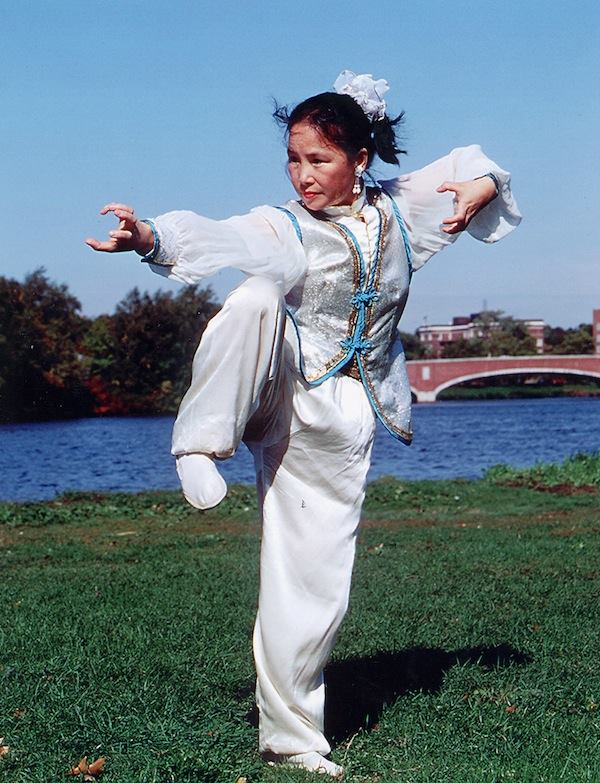Tai Bow is an intriguing blend of ancient martial arts and modern fitness trends, capturing the attention of individuals seeking holistic well-being. This practice combines the graceful movements of Tai Chi with dynamic elements, creating a unique workout that enhances flexibility, strength, and mental clarity. In this comprehensive article, we will explore the origins, techniques, benefits, and the growing popularity of Tai Bow. Whether you are a seasoned practitioner or new to the world of martial arts, this guide will provide you with valuable insights into this captivating practice.
As we delve deeper into the essence of Tai Bow, it is essential to understand its roots in traditional Chinese martial arts. Tai Bow not only emphasizes physical fitness but also promotes mindfulness and relaxation, making it suitable for practitioners of all ages and fitness levels. With a focus on the synergy between body and mind, Tai Bow has gained recognition as an effective means to improve overall health and well-being.
In the following sections, we will examine the key components of Tai Bow, including its history, techniques, health benefits, and tips for getting started. By the end of this article, you will have a comprehensive understanding of Tai Bow and how it can enhance your life.
Table of Contents
- 1. The History of Tai Bow
- 2. Key Techniques in Tai Bow
- 3. Health Benefits of Tai Bow
- 4. Getting Started with Tai Bow
- 5. Essential Equipment for Tai Bow
- 6. The Tai Bow Community
- 7. Advanced Tai Bow Practices
- 8. Conclusion
1. The History of Tai Bow
Tai Bow has its origins in the ancient practices of Tai Chi, which dates back several centuries in China. Tai Chi was initially developed as a form of self-defense and has since evolved into a widely practiced martial art and form of exercise. Tai Bow emerged as a modern interpretation of these traditional movements, incorporating elements of fitness and aerobic exercise.
The term "Bow" in Tai Bow signifies a blend of strength and fluidity, emphasizing the importance of balance and coordination. This innovative approach to Tai Chi has attracted a diverse audience, including fitness enthusiasts and those seeking a mindful practice.
2. Key Techniques in Tai Bow
Tai Bow incorporates a variety of techniques that emphasize fluid movements, balance, and coordination. Here are some key techniques:
- **Stances:** Tai Bow includes various stances that help practitioners maintain balance and stability.
- **Flowing Movements:** The practice involves continuous, flowing movements that enhance flexibility and strength.
- **Breath Control:** Practitioners focus on breath awareness, which is essential for relaxation and mindfulness.
- **Mind-Body Connection:** Tai Bow emphasizes the connection between mental focus and physical movement.
2.1 Warm-Up Exercises
Before starting a Tai Bow session, it is crucial to engage in warm-up exercises to prepare the body. These may include gentle stretches and mobility drills to enhance flexibility and reduce the risk of injury.
3. Health Benefits of Tai Bow
The health benefits of Tai Bow are extensive, making it an appealing choice for individuals seeking to improve their physical and mental well-being. Here are some notable benefits:
- **Improved Flexibility:** The flowing movements of Tai Bow enhance flexibility in the joints and muscles.
- **Increased Strength:** Regular practice builds core strength and muscle tone.
- **Stress Reduction:** The mindful nature of Tai Bow promotes relaxation and reduces stress levels.
- **Enhanced Balance:** Practicing Tai Bow improves coordination and balance, reducing the risk of falls.
3.1 Mental Clarity and Focus
Engaging in Tai Bow fosters mental clarity and focus, as practitioners learn to connect their movements with their breath. This mindfulness aspect can lead to improved concentration in daily activities.
4. Getting Started with Tai Bow
Starting your Tai Bow journey is simple and accessible. Here are some steps to help you get started:
- **Find a Class:** Look for local Tai Bow classes or online tutorials to learn the basics.
- **Wear Comfortable Clothing:** Choose breathable, comfortable clothing that allows for ease of movement.
- **Start Slowly:** Begin with beginner-level routines and gradually progress to more advanced practices.
- **Practice Regularly:** Consistency is key to reaping the benefits of Tai Bow.
5. Essential Equipment for Tai Bow
While Tai Bow can be practiced with minimal equipment, certain items can enhance your experience:
- **Yoga Mat:** A non-slip mat provides comfort and stability during practice.
- **Comfortable Shoes:** Soft, flexible shoes designed for movement can improve balance.
- **Water Bottle:** Staying hydrated is essential during any physical activity.
6. The Tai Bow Community
Joining a Tai Bow community can enhance your practice and provide support from fellow enthusiasts. Many local studios and online platforms offer group classes and forums for sharing experiences and tips.
7. Advanced Tai Bow Practices
For those interested in deepening their practice, advanced Tai Bow techniques include:
- **Combining Tai Bow with Other Forms of Exercise:** Integrating Tai Bow with yoga or pilates can enhance overall fitness.
- **Participating in Workshops:** Attend workshops to learn from experienced instructors and refine your techniques.
8. Conclusion
In conclusion, Tai Bow offers a unique blend of physical fitness and mindfulness, making it an excellent choice for individuals seeking to improve their overall well-being. With its rich history, diverse techniques, and numerous health benefits, Tai Bow has earned its place in the world of modern fitness. We encourage you to explore this captivating practice and consider incorporating it into your fitness routine.
Feel free to leave a comment below sharing your experiences with Tai Bow, or share this article with others who might be interested in discovering the benefits of this transformative practice!
Thank you for reading, and we look forward to seeing you again on our site for more insightful articles!


